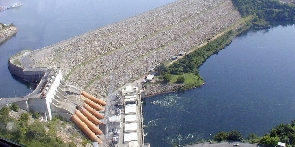The idea of constructing a hydro dam on the Volta River was conceived as far back as 1915 by a geologist, Albert Ernest Kitson, but it was until 1949 that the actual development was proposed, an idea which was adopted by Kwame Nkrumah, when he took over the reins of power. Construction subsequently started in 1961, and was completed in 1965, at the cost of £130 million.
Now known as Akosombo Dam, it is considered the third largest man-made lake in the world, after Lake Kariba in southern African.
With the initial installed capacity of 912 megawatts, and subsequently increased to 1,020 megawatts after retrofitting, the Akosombo Dam has helped in the industrial development of Ghana, and is currently considered the cheapest source of power in Ghana.
But, at the age of 54 years, a Scientist is raising the alarm that any hydro dam that has, without specifically mentioning Akosombo Dam, gone beyond 50 years of existence could be dangerous to the very survival of human beings and must be decommissioned.
Chris Wright, Co-Director of Climate Tracker, in an exclusive interview with The Chronicle, after a training session for the media, organised during the Climate Chance Summit, Africa 2019, was emphatic that an average hydro dam’s lifespan is 50 years.
After 50 years, he argued, the quality of the water in the dam becomes so poor that it puts the surrounding communities downstream at risk. In such circumstances, he continued, the only option left is to decommission the dam.
“Dams break, but I am not talking about any particular dam. But it (dam) totally depends on the state of the dam, but over time dams get weaker because of the silt that builds up that eat into the structure of the dam,” he stressed.
According to him, decommissioning a dam is something that does not come cheap, since it demands lots of budgetary allocations in performing that task.
He told The Chronicle that an average dam can release toxic chemicals like methane that has built up overtime, because the dammed river alters the temperature and oxygen levels of the water, which leads to poor water quality.
Some governments, in order to save their countries from doom, decommission their dams and rebuild another one very close by, as a means of saving cost, but he said “that is not always the option.”
Mr Wright continued that the lifecycle of a dam creates lots of challenges for policy makers and the environment, in terms of finance.
Unfortunately, he added that scientists do not have answers for the water which is naturally going to release methane when it dries up.
“You might be planning a large scale dam because of its environmental benefits, but when you bring in the whole cycle assessment of the methane that it potentially releases, then you need to question, is it really a good option to think about?” Mr Wright asked.
“Decommissioning a dam is a tough situation for any government to be in, because when you build a dam, it is effectively free electricity and provides [a] great source of water, so giving that up is going to cause a lot of money, and the process of decommissioning is also going to cost a lot of money,” he added.
Bellona-Gerard Vitto-Quao, an officer at Corporate Communication at the Volta River Authority (VRA), when contacted at her office, said that assertion should not be swallowed hook, line and sinker, since there are several types of dams, and each with its own capacity.
She said the geographical location and engineering of a dam can enable it to live even up to 100 years, insisting that this journalist should have asked Mr Wright to be specific on the type of dam he was referring to.
Ms Vitto-Quao, after the short encounter, advised that this journalist goes back to read about the types of dams, especially in West Africa, and narrow it to Ghana, before the conversation into the Akosombo dam’s lifespan can begin.
General News of Sunday, 20 October 2019
Source: thechronicle.com.gh













